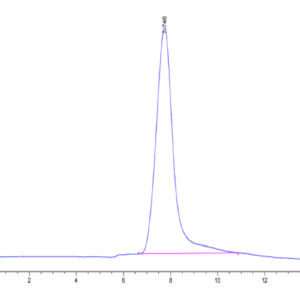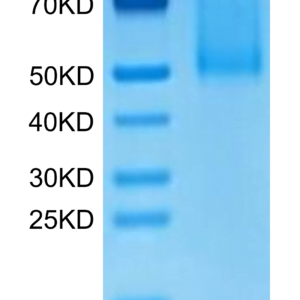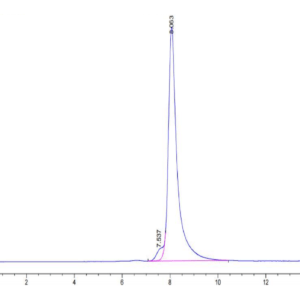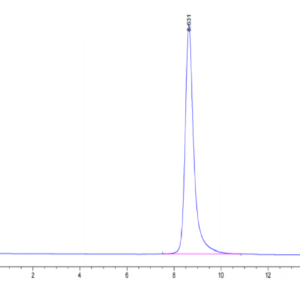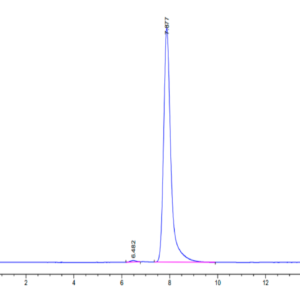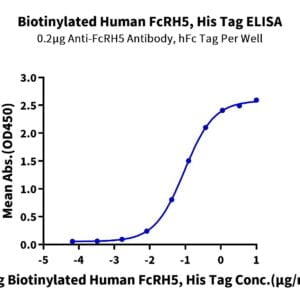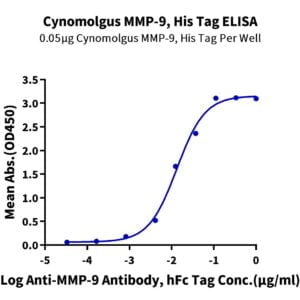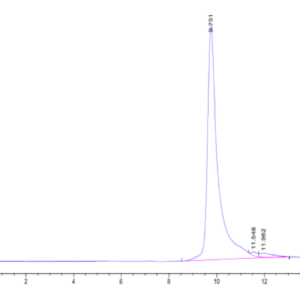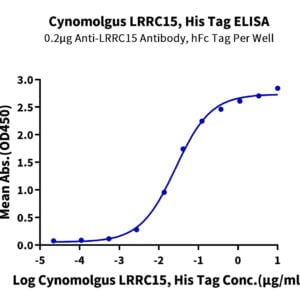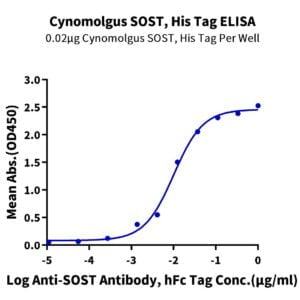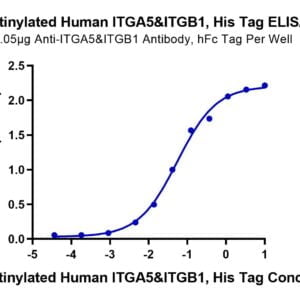| Weight | 1 lbs |
|---|---|
| Dimensions | 9 × 5 × 2 in |
| accession | P37840 |
| express system | E.coli |
| product tag | No Tag |
| purity | > 95% as determined by Tris-Bis PAGE;> 95% as determined by HPLC |
| background | Alpha-synuclein (α-synuclein) is a small, acidic protein containing 140 amino acids, highly expressed in the brain and primarily localized in the presynaptic terminals. It is found in high concentrations in Lewy Bodies, proteinaceous aggregates that constitute a typical histopathologic hallmark of Parkinson's disease. |
| molecular weight | The protein has a predicted MW of 14.5 kDa same as Tris-Bis PAGE result. |
| available size | 100 µg, 500 µg |
| endotoxin | Less than 1EU per μg by the LAL method. |
Human Alpha Synuclein Protein 2554
$75.00 – $250.00
Summary
- Expression: E.coli
- Pure: Yes (HPLC)
- Amino Acid Range: Met1-Ala140
Human Alpha Synuclein Protein 2554
| protein |
|---|
| Size and concentration 100, 500µg and lyophilized |
| Form Lyophilized |
| Storage Instructions Valid for 12 months from date of receipt when stored at -80°C. Recommend to aliquot the protein into smaller quantities for optimal storage. Please minimize freeze-thaw cycles. |
| Storage buffer Shipped at ambient temperature. |
| Purity > 95% as determined by Tris-Bis PAGE |
| target relevance |
|---|
| Alpha-synuclein (α-synuclein) is a small, acidic protein containing 140 amino acids, highly expressed in the brain and primarily localized in the presynaptic terminals. It is found in high concentrations in Lewy Bodies, proteinaceous aggregates that constitute a typical histopathologic hallmark of Parkinson's disease. |
| Protein names Alpha-synuclein (Non-A beta component of AD amyloid) (Non-A4 component of amyloid precursor) (NACP) |
| Gene names SNCA,SNCA NACP PARK1 |
| Protein family Synuclein family |
| Mass 14460Da |
| Function Neuronal protein that plays several roles in synaptic activity such as regulation of synaptic vesicle trafficking and subsequent neurotransmitter release (PubMed:28288128, PubMed:30404828, PubMed:20798282, PubMed:26442590). Participates as a monomer in synaptic vesicle exocytosis by enhancing vesicle priming, fusion and dilation of exocytotic fusion pores (PubMed:28288128, PubMed:30404828). Mechanistically, acts by increasing local Ca(2+) release from microdomains which is essential for the enhancement of ATP-induced exocytosis (PubMed:30404828). Acts also as a molecular chaperone in its multimeric membrane-bound state, assisting in the folding of synaptic fusion components called SNAREs (Soluble NSF Attachment Protein REceptors) at presynaptic plasma membrane in conjunction with cysteine string protein-alpha/DNAJC5 (PubMed:20798282). This chaperone activity is important to sustain normal SNARE-complex assembly during aging (PubMed:20798282). Also plays a role in the regulation of the dopamine neurotransmission by associating with the dopamine transporter (DAT1) and thereby modulating its activity (PubMed:26442590). |
| Subellular location Cytoplasm Membrane Nucleus Synapse Secreted Cell projection, axon Note=Membrane-bound in dopaminergic neurons (PubMed:15282274). Expressed and colocalized with SEPTIN4 in dopaminergic axon terminals, especially at the varicosities (By similarity). |
| Tissues Highly expressed in presynaptic terminals in the central nervous system. Expressed principally in brain. |
| Structure Soluble monomer. Homotetramer (PubMed:21841800). A dynamic intracellular population of tetramers and monomers coexists normally and the tetramer plays an essential role in maintaining homeostasis (PubMed:21841800). Interacts with UCHL1 (By similarity). Interacts with phospholipase D and histones. Interacts (via N-terminus) with synphilin-1/SNCAIP; this interaction promotes formation of SNCA inclusions in the cytoplasm (PubMed:19762560). Interacts with CALM1 (PubMed:23607618). Interacts with STXBP1; this interaction controls SNCA self-replicating aggregation (PubMed:27597756). Interacts with SNARE components VAMP2 and SNAP25; these interactions allows SNARE complex assembly and integrity (PubMed:20798282). Interacts with RPH3A and RAB3A (PubMed:15207266). Interacts with SERF1A; this interaction promotes the aggregation of SNCA (PubMed:22854022, PubMed:31034892). Interacts with SEPTIN4 (By similarity). |
| Post-translational modification Phosphorylated, predominantly on serine residues. Phosphorylation by CK1 appears to occur on residues distinct from the residue phosphorylated by other kinases. Phosphorylation of Ser-129 is selective and extensive in synucleinopathy lesions. In vitro, phosphorylation at Ser-129 promoted insoluble fibril formation. Phosphorylated on Tyr-125 by a PTK2B-dependent pathway upon osmotic stress. ; Hallmark lesions of neurodegenerative synucleinopathies contain alpha-synuclein that is modified by nitration of tyrosine residues and possibly by dityrosine cross-linking to generated stable oligomers.; Ubiquitinated. The predominant conjugate is the diubiquitinated form. ; Acetylation at Met-1 seems to be important for proper folding and native oligomeric structure. |
| Target Relevance information above includes information from UniProt accession: P37840 |
| The UniProt Consortium |
Data
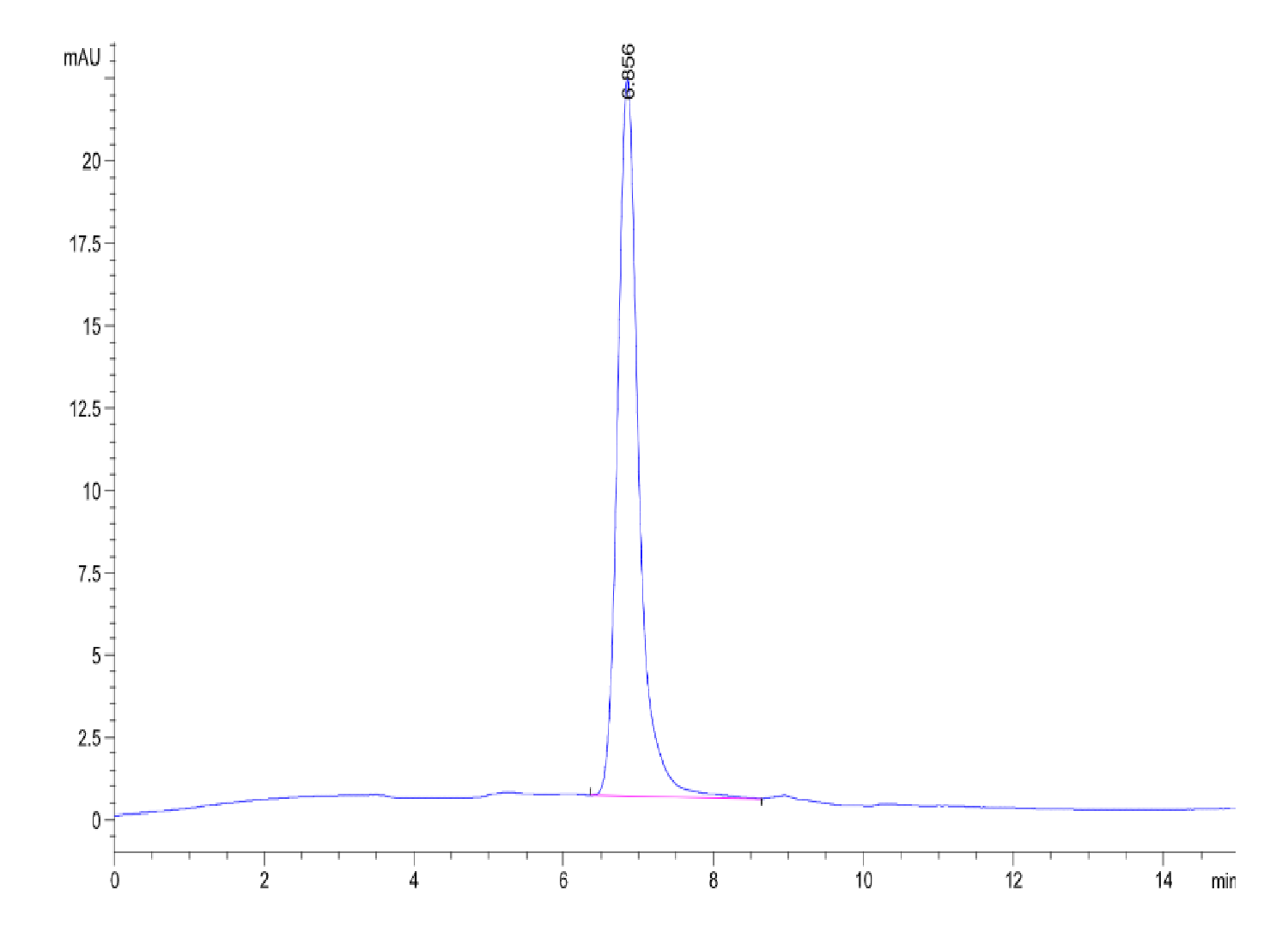 |
| The purity of Human Alpha Synuclein is greater than 95% as determined by SEC-HPLC. |
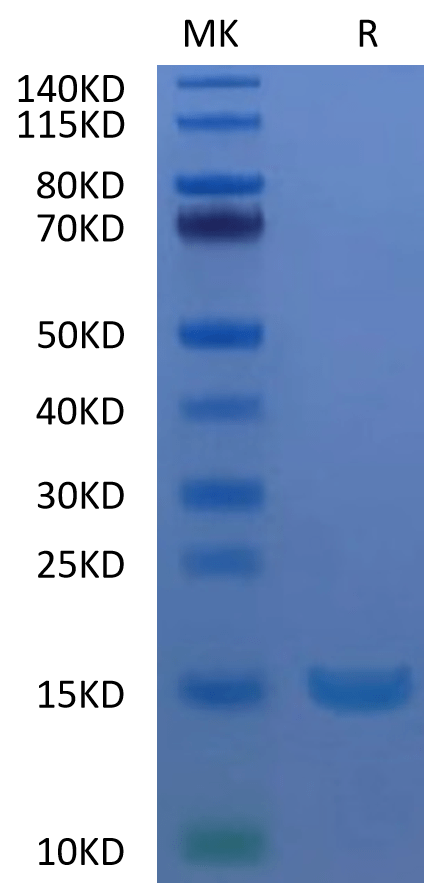 |
| Human Alpha Synuclein on Tris-Bis PAGE under reduced condition. The purity is greater than 95%. |
Publications
Publications
| pmid | title | authors | citation |
|---|---|---|---|
| We haven't added any publications to our database yet. | |||
Protocols
| relevant to this product |
|---|
Documents
| # | ||
|---|---|---|
| Please enter your product and batch number here to retrieve product datasheet, SDS, and QC information. | ||
